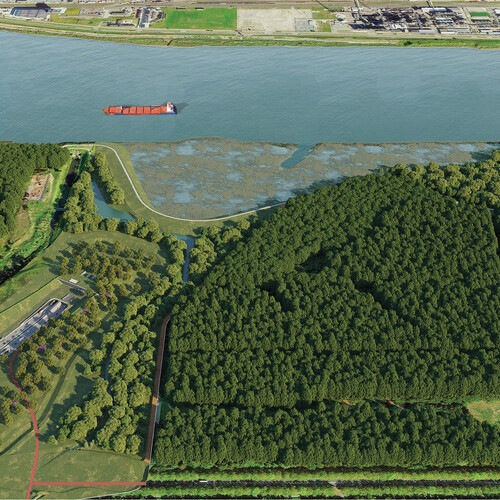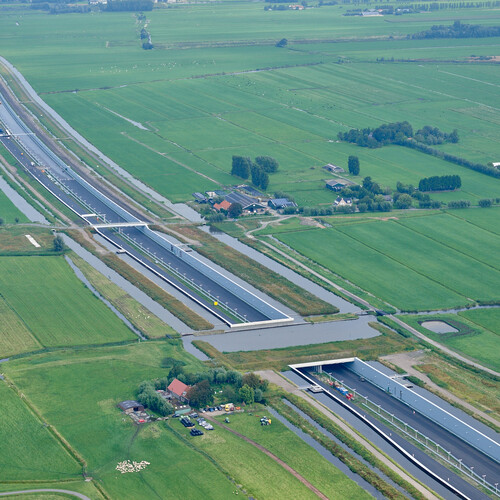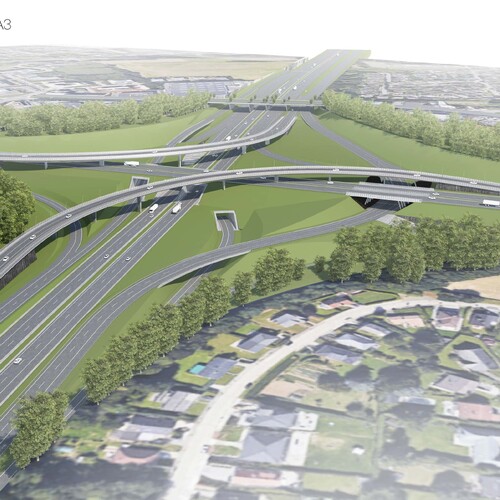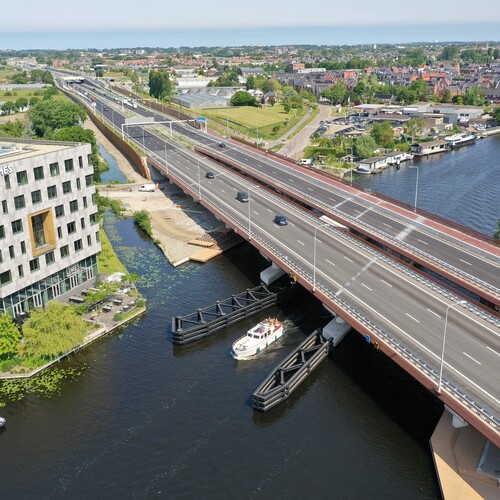Motorways. Throughout Europe, these transport networks are being further extended and intensified. Not without criticism. The asphalt arteries have often mercilessly cut through cities and landscapes. But current adjustments to the highway network present opportunities too, both for nature and for the restoration of old connections or the creation of new ones. Opportunities for a softening of the hard infrastructure through careful placement, with a close eye kept on the surroundings and attention firmly focused on a sustainable future.
‘Not everyone who tears along the highway realizes that architects also design motorways,’ says Reinald Top (architect/partner at architectural studio ZJA). ‘ZJA contributes to the creation of better connections, but it also helps to make space for natural vegetation, biodiversity and green corridors. We are continually developing new ideas in those areas.’
Paradise for the bees
‘Don’t hear, don’t see, don’t smell’ was the motto for the planning approval decision for the A4 between Delft and Schiedam. Since 2015 the motorway has cut through the polders and natural landscapes of Midden-Delfland, partly in a tunnel and partly in a cutting. In the verges between Delft and Schiedam, organic flower seeds were scattered, and the resulting flora became a true paradise for the bees. Europe’s first ‘Honey Highway’ was an initiative of beekeeper Deborah Post, developed in collaboration with ZJA and BoschSlabbers Landscape Architects, among others.
Experimental use of BioBlocks
Zuidasdok is one of the biggest infrastructure projects in the Netherlands. The entire design by ZJA, Team V and BoschSlabbers is based on the need for green space. At the De Nieuwe Meer junction, an experiment is underway with bricks known as BioBlocks. They are made of compressed plant material on which plants can grow, and they provide space for birds and insects. The plan is to use the resulting sustainable walls at places between the De Nieuwe Meer intersection and the Amstel intersection, as part of the A10 Zuid.
Plants on watertight walls
The N206 ir. G. Tjalmaweg between Leiden and Katwijk is being replaced, and the new road will be built below the level of the groundwater. A mix of plants will grow against the watertight walls. The first of 38,000 climbing and hanging plants were planted at the start of this year. The walls of the two kilometres of sunken road will as a result provide an experience of natural greenery and promote biodiversity. The new road is expected to open this spring. Here too, ZJA worked with BoschSlabbers on the design.
Green breathing space next to the road
As well as in Amsterdam, ZJA is working on the modernization of ring roads around Antwerp and Brussels. To improve traffic flow, the northern Ring in Brussels is being relaid. As part of consultancy consortium MoVeRo, we are studying compact intersections. Laying a network of bicycle highways along the ring road, with plenty of green verges and slopes, is a second important part of our project ‘Work on the Ring’.
‘Working on the ring is a complex task,’ says Wiebe Strick (project architect at ZJA). ‘We are drawing upon our expertise to find a future-proof, sustainable and climate-robust solution. While the expansion of a road network often comes at the price of reducing green space, by redeveloping the road with compact intersections we are actually increasing it. Improvements to both mobility and the quality of the lived environment here literally mean making space for people, animals and nature.’
Within the framework of the Ooster connection at Antwerp, the completion of the ring by the creation of the Schelde tunnel, and the roofing over and tunnelling of the road on the right bank are together creating green breathing space on and next to the highway. As well as the placement and design of the ring road, ZJA also designed the connections for pedestrians and cyclists, which enhance the quality of the infrastructure as a whole.
Consultancy consortium MoVeRo consists of Sweco, Arcadis, ZJA, Frank van Hulle, Cluster and Mint
Related


Project
A4 Delft – Schiedam
The A4 Delft - Schiedam (A4DS) motorway, close to the city of Delft and Rotterdam, transects an area of outstanding natural beauty and a…

Project
Research on adaptive and compact traffic intersections: the Ring around Brussels
The future of the Ring around Brussels

Project
N206 Tjalmaweg, Katwijk - Leiden
Green road with Roman past
The provincial road N206 stretches from Leiden to the coast, cutting through the open landscape of the former military airbase Valkenburg…